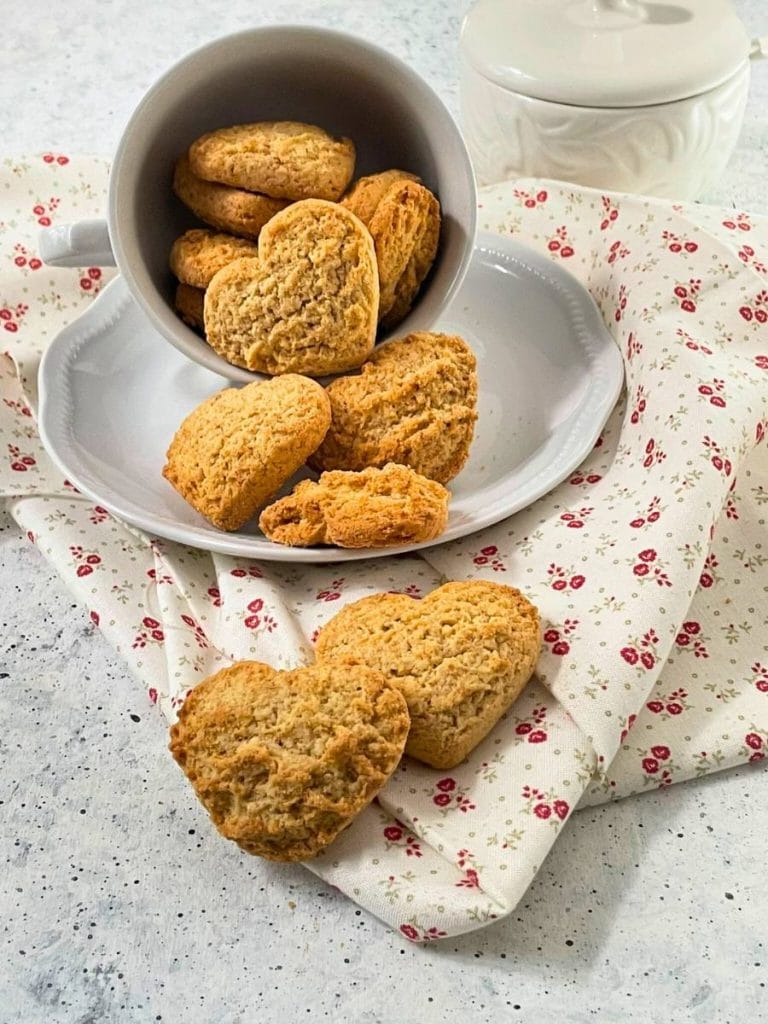Preparing delicious, fragrant, and at the same time light desserts is not a utopia: sugar-free cookies are the perfect demonstration. It is a variation of the classic shortbread that forgoes traditional sugar in favor of maltitol, a natural sweetener that allows achieving the same pleasant taste but with an additional advantage: the low glycemic index.
In recent years, more and more people have chosen to reduce or eliminate refined sugar from their diet. This does not mean having to give up the pleasure of a crisp cookie but simply finding more balanced alternatives. Maltitol, in fact, is a sugar substitute that is very easy to use in cooking and allows making sugar-free cookies suitable for those who want to keep their blood sugar stable or for those who desire a light but tasty recipe.
These cookies have a delicate flavor thanks to the vanilla, making them perfect for dunking in milk or tea, but also for enjoying on their own as a sweet treat after a meal. The texture is typical of shortbread: crunchy to the bite and crumbly, just as you would expect from a homemade cookie. The main difference lies in the lightness since the low glycemic index of maltitol helps to avoid blood sugar spikes and prolongs the feeling of satiety.
Another point in favor is the simplicity of the recipe: few ingredients, quick steps, and a result that wins over both the young and the old. Sugar-free cookies are therefore not only a healthy choice but also a genuine treat that brings the aroma of homemade sweets to the table, combining taste and well-being.
Prepare them and you will discover that giving up sugar does not mean giving up pleasure.
I have just started preparing recipes without traditional sugar, but here on the blog, there are some breakfast recipes where you can easily substitute sugar with erythritol or maltitol.

- Difficulty: Very Easy
- Cost: Cheap
- Rest time: 30 Minutes
- Preparation time: 15 Minutes
- Portions: 25-30 cookies
- Cooking methods: Oven
- Cuisine: Italian
- Seasonality: All seasons
Ingredients for sugar-free cookies
- 1 1/4 cups all-purpose flour
- 1 1/4 cups whole wheat flour
- 1/2 cup butter
- 1 egg
- 2 egg yolks
- 3/4 cup maltitol
- 1 teaspoon vanilla extract
- 1 pinch salt
Tools
- Parchment Paper
- Cookie Cutters
Preparation of sugar-free vanilla shortbread cookies
Combine the flour with the slightly softened butter and work them until you get a sandy mixture.
Make a well in the center and add the whole egg, the two yolks, the maltitol, the pinch of salt, and the vanilla.Knead until you obtain a smooth and compact dough.
Wrap the dough in plastic wrap and let it rest in the refrigerator for at least 30 minutes.
Roll out the dough with a rolling pin to a thickness of about 1/4 inch (or thicker if you prefer softer cookies).Cut the cookies with your preferred cutters and place them on a baking tray lined with parchment paper.
Bake in a preheated oven at 350°F for 13-15 minutes, until the cookies are lightly golden.
Sugar-free vanilla shortbread cookies keep perfectly in an airtight container, away from heat and moisture. They maintain their fragrance for about a week. If you want to store them longer, you can freeze them already cooked and thaw them when needed: they will be as crumbly as freshly made.
Follow me on social media
my Facebook page, my Instagram profile, my Pinterest page
FAQ (Frequently Asked Questions)
What is maltitol and why is it used in sugar-free cookies?
Maltitol is a natural sweetener derived from corn or wheat starch. It is often used in sugar-free cookies because it has about half the calories of traditional sugar and a lower glycemic index, making it suitable for those looking for a lighter alternative.
Do cookies with maltitol really have a low glycemic index?
Yes, maltitol has a significantly lower glycemic index than refined sugar. This means sugar-free cookies made with this sweetener release energy gradually, avoiding glycemic spikes and promoting a more prolonged sense of satiety.
Do sugar-free cookies with maltitol taste the same as traditional cookies?
Absolutely yes. Maltitol does not alter the taste of the preparations and maintains the aroma of flavors, such as vanilla in this recipe. The result is fragrant and crumbly cookies, very similar to the classic ones, but with an additional advantage: they are lighter and suitable for those who want to reduce sugar.

